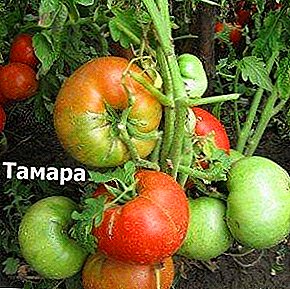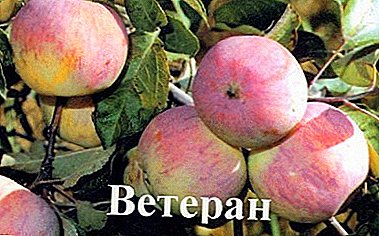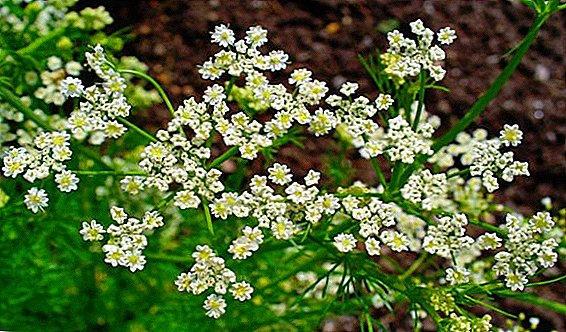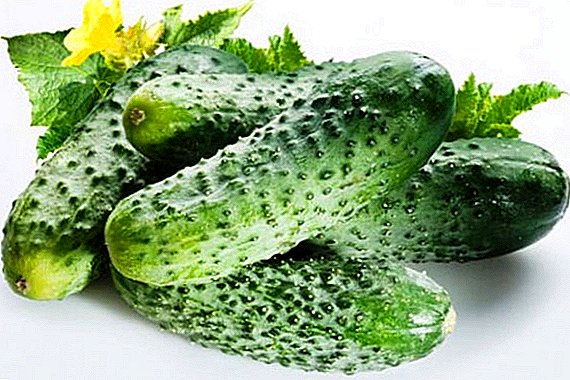 Anise is an annual plant a little over half a meter high. The stem is straight, thin flat leaves with jagged edges. It blooms in early July with small five-petal flowers of white color, which form small umbrella-shaped inflorescences. In August, the plant ripens a slightly elongated fruit with a length of 3 mm with a specific aroma. The plant is widespread - grows in America, Europe, Central Asia and the Caucasus. Anis has many useful properties and has certain contraindications, we will tell about them in more detail later.
Anise is an annual plant a little over half a meter high. The stem is straight, thin flat leaves with jagged edges. It blooms in early July with small five-petal flowers of white color, which form small umbrella-shaped inflorescences. In August, the plant ripens a slightly elongated fruit with a length of 3 mm with a specific aroma. The plant is widespread - grows in America, Europe, Central Asia and the Caucasus. Anis has many useful properties and has certain contraindications, we will tell about them in more detail later.
The chemical composition of anise and its nutritional value
The composition of anise includes many elements: phosphorus, calcium, potassium, magnesium, zinc, manganese, copper, sulfur; folic and ascorbic acid, riboflavin, niacin, pyridoxine, thiamine.
Important! The highest concentration of nutrients in the seeds of anise.Anise oils contain anise ketone, anise aldehyde and anis acid.
Nutritional value of 100 g of anise: carbohydrates - 35.5 g, proteins - 17.7 g, fats - 15.8 g, while the caloric content is 337 calories. The plant has a fairly high caloric content, since its composition includes essential oils and fatty acids.
Pharmacological properties of anise
 The healing properties of anise ordinary people have long known. Anise has antispasmodic, anti-inflammatory and expectorant properties, and also has a bactericidal effect on the mucous membranes of the respiratory tract, facilitates the release of sputum. It is used to relieve pain and to beat down the heat, as a diaphoretic. Anise solution and tincture act as a laxative and antiseptic. The drugs are applicable for the treatment of kidneys, liver, gastrointestinal tract and urogenital system, headaches, insomnia, and nervous disorders. Useful properties of anise favorably affect the solution of intimate problems. It is believed that the plant eliminates the representatives of the weaker sex from women's diseases, and improves the potency of men.
The healing properties of anise ordinary people have long known. Anise has antispasmodic, anti-inflammatory and expectorant properties, and also has a bactericidal effect on the mucous membranes of the respiratory tract, facilitates the release of sputum. It is used to relieve pain and to beat down the heat, as a diaphoretic. Anise solution and tincture act as a laxative and antiseptic. The drugs are applicable for the treatment of kidneys, liver, gastrointestinal tract and urogenital system, headaches, insomnia, and nervous disorders. Useful properties of anise favorably affect the solution of intimate problems. It is believed that the plant eliminates the representatives of the weaker sex from women's diseases, and improves the potency of men.
Medicinal properties of anise seeds
Anise seeds have valuable healing properties, they cure diseases of the stomach, kidneys, restore sexual functions, are applicable for expectorating mucus and sputum, and improve the smell from the mouth.
The range of application of anise essential oil is wide, it is used for tachycardia, rheumatism, arthritis, cough, asthma, rhinitis, cystitis and kidney stones, muscle pain, flatulence, dizziness and headaches, menopause and stress. Anise oil accelerates the healing of burns and fights bleeding gums. Anise seed infusions and infusions increase lactation in lactating women.
The use of anise fruit in traditional medicine
 Due to the chemical composition of anise fruits have healing properties that facilitate the course of diseases and allow to be cured without the use of drugs. Traditional healers like to use anise for the treatment of various diseases. Fruits are a valuable raw material for chest elixirs, drops, oils, ammonia-anisic tincture, as well as breast, laxative, and diaphoretic teas. If possible, choose fruits that have a bright color with a rich aroma, a dark color and a barely perceptible odor may suggest that the seeds are stale or have been stored in inappropriate conditions.
Due to the chemical composition of anise fruits have healing properties that facilitate the course of diseases and allow to be cured without the use of drugs. Traditional healers like to use anise for the treatment of various diseases. Fruits are a valuable raw material for chest elixirs, drops, oils, ammonia-anisic tincture, as well as breast, laxative, and diaphoretic teas. If possible, choose fruits that have a bright color with a rich aroma, a dark color and a barely perceptible odor may suggest that the seeds are stale or have been stored in inappropriate conditions.
Did you know? Aromatic anise oil has found decent use in soap making.
Popular recipes from fruits for healing:
- for colds and sore throats - boil the anise fruits for 10 minutes, filter the broth, add 1 tsp. honey and brandy.
- cough - 1 tsp. Anise fruits, licorice, althea and sage grass powder are poured with two cups of boiling water, drawn and taken up to 4 times per day.
- from diseases of the gastrointestinal tract - 1 tbsp. l Anise, mint, chamomile, cumin and valerian pour a liter of water, bring to a boil, strain and drink half a cup 2 times a day.
- from kidney disease - 1 tsp. fruits of anise, juniper, parsley and lily of the valley brew two cups of boiling water, leave for two hours, take half a cup 3 times a day.
Important! It is not recommended to continue the treatment for longer than a week to avoid complications.
Tea brewed from dried aniseed grass has found its use as a means to stimulate the pancreas and liver.
How to use anise in cosmetology?
 For cosmetic purposes, anise is used quite recently, mainly in anti-aging procedures and preparations. Anise extract and anise oil promote smoothing of mimic wrinkles, relaxing facial muscles. Anise essential oil can be added to a cream, lotion or mask.
For cosmetic purposes, anise is used quite recently, mainly in anti-aging procedures and preparations. Anise extract and anise oil promote smoothing of mimic wrinkles, relaxing facial muscles. Anise essential oil can be added to a cream, lotion or mask.
I was interested in the unusual aroma of anise and perfumers, they began to use its natural extracts and artificially synthesized in the production of perfumes and colognes.
The use of anise in culinary purposes
Cooking actively uses the fruits of anise in the form of spices. Anise is added to pastry and bakery products, in the preservation of fruits and berries, in the preparation of meat and vegetable dishes and sauces. Anise fruits are used in the production of absinthe, sambuca, anisette and other alcoholic beverages. In eastern countries, anise fruits are used in brewing tea, for marinating meat and fish, and preparing fruit dishes.
Did you know? Archaeologists proved the fact of using anise for medicinal purposes in ancient Egypt, Rome and Greece.
Anise: how to prepare medical raw materials
Harvesting of raw materials is carried out at the end of summer, when the stem turns yellow and the fruits turn brown. The plant is cut and suspended for drying in a ventilated darkened room. After drying, the anise is threshed, cleaning the healing seeds. Medical raw materials are poured into a closing jar or a sealed bag and stored in a cool place for 2-3 years.
Side effects and contraindications of anise
Medicinal properties of fruits and seeds of anise ordinary are indisputable, but there are contraindications to their use. In particular, use anise is prohibited:
 children under 10 years old
children under 10 years old- during any period of pregnancy,
- in chronic diseases of the digestive tract,
- in the presence of intestinal or stomach ulcers,
- with increased acidity,
- with individual intolerance, allergies and dermatological problems.
Before you begin treatment with the healing fruits of anise, consult your doctor about the use of this plant. At the slightest suspicion of the presence of allergic reactions need to hold an allergy test.


 children under 10 years old
children under 10 years old









